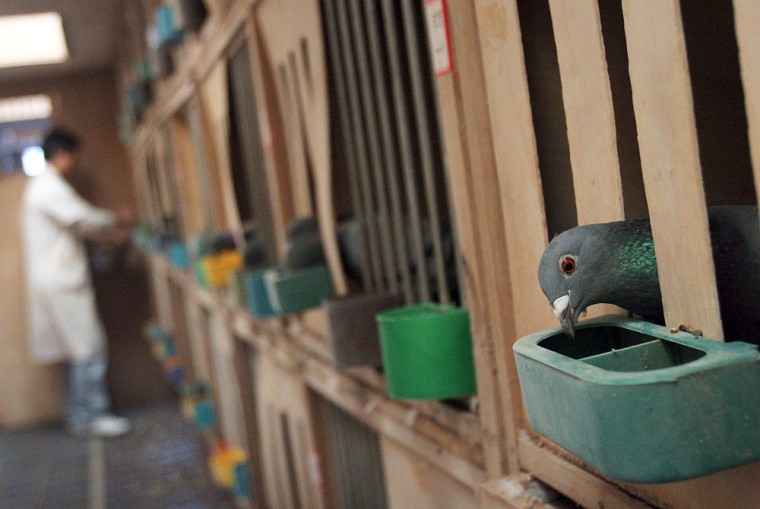The deadly H5N1 bird flu virus thrives in the cooler months between October and March, matching the seasonal peak for common human influenza viruses.
This fact is not lost on health experts, who fear the two will marry in a “mixing host”, such as a human or a pig, resulting in a lethal hybrid that not only spreads easily between humans, but is packed with the power to kill millions of people.
One question is why influenza peaks at this time each year. Scientists suggest a plethora of likely explanations, from viruses surviving better in cooler and wetter environments to people crowding together in the festive season, creating the perfect setting for viruses to proliferate.
“The survival of the virus in the environment is partly involved, and the stress (occurring in both humans and animals) in these temperatures,” said Alan Hampson, an influenza expert and former deputy director of the WHO’s Collaborating Center for Reference and Research on Influenza in Melbourne.
A team of scientists in Asia published a paper in Nature magazine last year saying that H5N1 viruses have been circulating in China since 2001 with a seasonal pattern, peaking from October to March when the average temperature is below 20 degrees Celsius (68 degrees Fahrenheit).
And the lower the temperature, the better it can survive.
“When the temperature goes below 20 C, the isolation rate of (H5N1) goes up to 15 percent in water birds,” said Yuen Kwok-yung, one of Hong Kong’s leading scientists who helped fight SARS and the bird flu virus in recent years.
The isolation rate is the amount of virus found in samples, such as blood and fecal matter, that are collected for testing.
Many factors
Water birds are natural reservoirs of the H5N1 virus, which made its first known jump to humans in Hong Kong in 1997, killing six people. Since late 2003, the virus has become endemic in poultry in many parts of Asia and is known to have infected more than 120 people, killing half of them.
It surfaced in recent weeks in birds in parts of Europe, including Russia, Turkey and Romania and many experts have pinned the blame on wild migratory birds for the spread.
Samson Wong, a microbiologist at the University of Hong Kong, said avian viruses can survive for up to four days in water with temperatures around 22 C. At 0 Celsius, they can survive for more than 30 days. They have also been found to survive longer in low relative humidity on droplets and on fecal matter.
Malik Peiris, a leading virologist at the University of Hong Kong, said these were crucial conditions for the survival of viruses.
“They don’t multiply outside the host, but through contamination of the soil, feces, the virus should remain alive until it moves from one animal to another,” Peiris said.
Cultural factors also assist in the spread of human and bird influenza viruses, the scientists said.
“It probably relates to the level of crowding and person-to-person contact during the colder season, travelling in vehicles with windows closed. We tend to crowd together more in cooler weather,” said Hampson, who now advises the Australian government on how to prepare for a possible influenza pandemic.
“With higher levels of stress, that assists the virus to take hold and reduces our ability to fight it off in the first instance so our first barriers to infection are easily overcome.”
Wong added: “The reason why flu infection is higher among chickens and ducks in winter is because we have many festivities. Farmers rear more for this season and the birds are packed closely together. It helps to propagate the virus.”
Hampson said reduced ultraviolet (UV) light in winter might also explain why viruses thrive in the cold. UV light is capable of inactivating viruses and bacteria.
“But I would think that UV light alone is not enough to explain the trouble. It could certainly be a contributing factor. Humidity, temperature, UV, all of these (decide) whether the virus can survive in the environment,” Hampson said.
